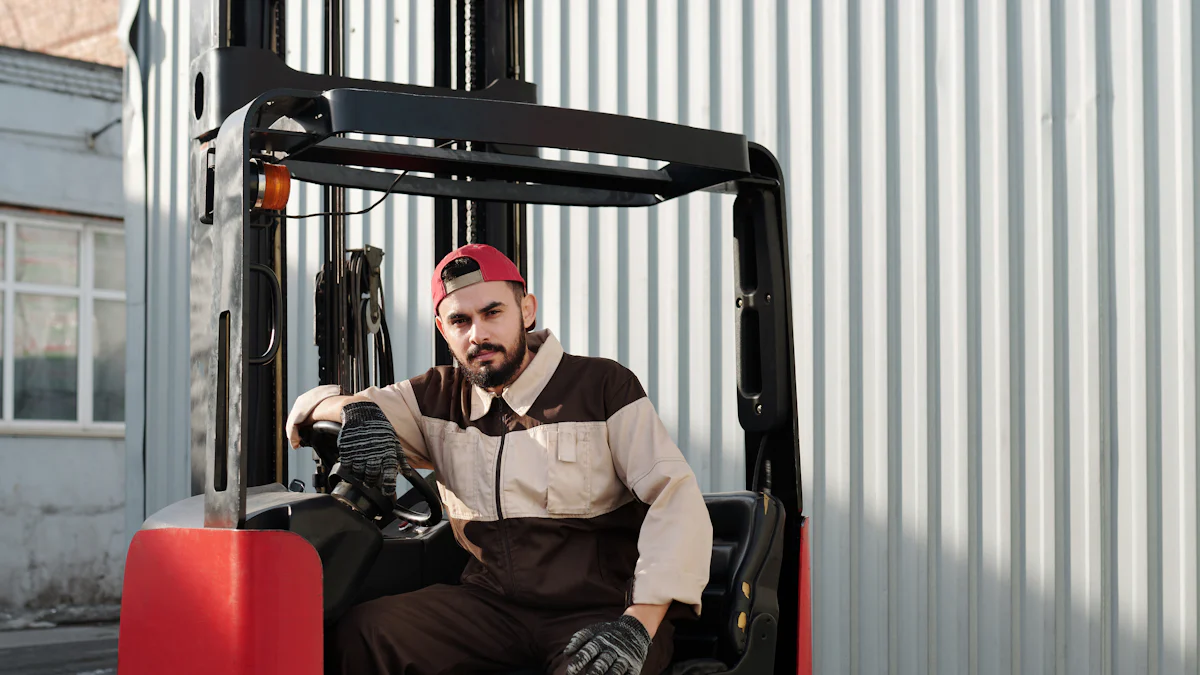
When it comes to pallet hand trucks and making the right choice, understanding the nuances between electric and manual options is crucial. These tools are essential for efficiently moving goods in various industries. Electric pallet jacks offer enhanced safety features, operational speed, and efficiency, while manual counterparts are known for their durability and cost-effectiveness. Let’s delve deeper into the world of pallet hand trucks to uncover which type aligns best with your specific needs.
Cost Comparison
When considering the initial investment required for Manual Pallet Hand Trucks, it’s essential to acknowledge that they come at a lower immediate cost compared to their electric counterparts. While Electric Pallet Hand Trucks may have a higher upfront price tag, the long-term benefits and operational efficiency they offer can outweigh this initial expense.
In terms of maintenance costs, Manual Pallet Hand Trucks are known for their durability and dependability, requiring minimal upkeep. On the other hand, Electric Pallet Hand Trucks may demand more frequent and intensive service and maintenance due to their complex electric motors and systems. However, the enhanced productivity and load capacity of electric pallet trucks can often justify these additional maintenance expenses.
Calculating the total cost of ownership involves looking beyond the initial purchase price. Manual Pallet Hand Trucks are generally more cost-effective in terms of ongoing maintenance and repair costs. In contrast, Electric Pallet Hand Trucks might incur higher expenses over time due to specialized servicing requirements. It’s crucial to weigh these factors against the increased efficiency and reduced labor associated with electric pallet jacks.
Productivity and Efficiency

Operational Speed
When it comes to Operational Speed, Manual Pallet Hand Trucks are known for their simplicity and ease of use. These tools are manually operated, allowing for precise control over the movement of goods. On the other hand, Electric Pallet Hand Trucks excel in this area due to their electric motors that provide consistent and efficient speed during operations. The power-assisted feature of electric pallet jacks significantly enhances the speed at which goods can be transported within a warehouse or industrial setting.
Load Capacity
In terms of Load Capacity, Manual Pallet Hand Trucks are ideal for lighter loads in tight spaces. They offer a practical solution for handling smaller quantities of goods with ease and maneuverability. Conversely, Electric Pallet Hand Trucks boast a higher load capacity, making them suitable for heavier items and larger quantities. The electric motors in these trucks enable them to carry substantial loads efficiently, reducing the need for manual labor and multiple trips.
Range of Operation
When considering the Range of Operation, it’s essential to note that Manual Pallet Hand Trucks are best suited for short-distance transportation within confined spaces. These trucks are perfect for navigating through narrow aisles or congested areas where larger equipment may struggle to maneuver effectively. In contrast, Electric Pallet Hand Trucks shine when it comes to covering longer distances or operating in more extensive warehouse facilities. Their power-driven functionality allows operators to transport goods across larger areas without exerting excessive physical effort.
Unknown
Material Handling and Logistics
“Hand pallet trucks, on the other hand, are simple and affordable tools ideal for lighter loads in tight spaces.”
Safety and Usability

Risk of Injury
Manual Pallet Hand Trucks
When operating Manual Pallet Hand Trucks, the risk of injury primarily stems from improper handling techniques. Mishandling these tools can result in minor accidents or even severe consequences, posing a threat to both the operator and the surrounding environment. It is crucial for individuals to undergo proper training on how to use manual pallet jacks safely to mitigate any potential risks.
In a study titled “Safety in material handling and operational efficiency,” it was highlighted that the incorrect use of hand pallet trucks can lead to significant injuries. This emphasizes the importance of adhering to safety protocols and guidelines when utilizing manual pallet hand trucks in various industrial settings.
To prevent accidents related to manual pallet jacks, operators should always ensure that the loads are stable and evenly distributed on the forks. Additionally, maintaining clear visibility while transporting goods is essential to avoid collisions or obstacles that could lead to injuries. By following these safety measures diligently, the risk of injury associated with manual pallet hand trucks can be significantly reduced.
Risk of Injury
Electric Pallet Hand Trucks
Electric Pallet Hand Trucks offer enhanced safety features compared to their manual counterparts. The electric motors in these trucks provide power-assisted lifting, reducing the strain on operators and minimizing the risk of injuries related to overexertion. By automating certain aspects of material handling, electric pallet jacks contribute to a safer and more ergonomically sound work environment.
A study focusing on “Pallet jacks enhance safety in the workspace” emphasized how these tools diminish the likelihood of injuries caused by strain and overexertion. The integration of electric pallet hand trucks into daily operations can significantly improve workplace safety standards by mitigating common risks associated with manual labor tasks.
The ergonomic design of electric pallet jacks further enhances usability and reduces the chances of operator fatigue or discomfort during prolonged use. With features such as adjustable handles and intuitive controls, electric pallet trucks prioritize user comfort without compromising on efficiency or productivity levels.
Ease of Use
Manual Pallet Hand Trucks
When it comes to Ease of Use, Manual Pallet Hand Trucks are straightforward tools that require minimal training for operation. Their simplicity makes them ideal for quick tasks or situations where immediate maneuverability is essential. Despite their manual nature, these trucks offer a user-friendly experience that allows operators to navigate through tight spaces with ease.
Operators who are proficient in using manual pallet jacks can efficiently transport goods within warehouses or storage facilities without encountering significant challenges. The basic functionality and uncomplicated controls of manual pallet hand trucks make them accessible to individuals with varying levels of experience in material handling tasks.
Ease of Use
Electric Pallet Hand Trucks
Contrary to manual options, Electric Pallet Hand Trucks excel in terms of ease-of-use due to their power-driven capabilities. These trucks require minimal physical effort from operators, thanks to their electric motors that handle lifting and movement tasks effortlessly. With intuitive controls and ergonomic design elements, electric pallet jacks streamline material handling processes while prioritizing operator convenience.
The seamless operation of electric pallet hand trucks contributes to increased efficiency within industrial environments by reducing downtime associated with manual labor tasks. Operators can swiftly navigate through warehouse spaces without exerting excessive energy, enhancing overall productivity levels across various operational areas.
Ergonomics
Manual Pallet Hand Trucks
In terms of Ergonomics, Manual Pallet Hand Trucks are known for their sturdy construction and reliable performance under demanding conditions. The ergonomic design features simple yet robust components that cater to practical material handling needs without compromising on durability. Despite being manually operated, these trucks prioritize user comfort by offering a stable platform for transporting goods securely.
The ergonomic benefits provided by manual pallet jacks include improved grip handles for better control during maneuvers and reinforced forks for enhanced load stability. These design elements contribute to a safer working environment by reducing the likelihood of accidents or injuries resulting from poor ergonomics practices during material handling tasks.
Ergonomics
Electric Pallet Hand Trucks
On the other hand, Electric Pallet Hand Trucks elevate ergonomics standards through innovative design features tailored towards operator comfort and efficiency. The ergonomic enhancements present in electric pallet jacks include adjustable height settings for handles, cushioned grips for reduced strain on hands, and intuitive controls for seamless operation.
By integrating advanced ergonomics into their design, electric pallet hand trucks optimize user experience while promoting safe handling practices within industrial settings. Operators benefit from reduced physical strain during repetitive tasks, leading to improved overall well-being and sustained productivity levels throughout extended work periods.
- Reflecting on the comparison between manual and electric pallet hand trucks, it is evident that each type offers distinct advantages depending on specific operational requirements.
- Multico highlights the efficiency of hand pallet trucks in organizing lighter loads within warehouses, emphasizing their role in optimizing space utilization.
- On the other hand, TCM underscores the safety and efficiency benefits of electric pallet trucks, enabling streamlined material handling processes with enhanced operator comfort.
- SHS Handling Solutions stresses the pivotal role of hand pallet trucks in ensuring seamless goods movement while emphasizing the significance of health and safety practices in warehouse operations.
In conclusion, choosing between electric and manual pallet hand trucks should be based on a thorough assessment of workload demands, safety considerations, and operational efficiency goals. By leveraging the unique strengths of each type, businesses can enhance productivity, reduce risks, and create a safer working environment for their operators.
Post time: Jun-12-2024
